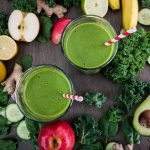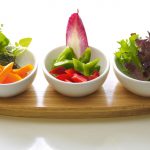What should we eat?
Despite the abundance of diet books, countless wellness websites and TV shows, many peopleare still confused about what to eat. Why is nutrition so difficult these days? Well, the answer to that lies in your local neighborhood supermarket. Take a look around and you will see food-like products that our ancestors would not recognize. These products have been made with unpronounceable chemicals, additives and fillers turning our food into a science experiment. We are focused on eating more or less carbs, fat or protein but rarely think about the nutrient content of each food. We have glorified low fat foods as good for us without thinking what replaced all that natural fat (sugar and fillers).
The Devil is in the Labels
If we want to escape the processed food trap here is some advice from nutrition author Michael Pollan worth its weight in gold: “Eat (whole) food. Not too much, mostly plants.” After reading his book “In Defense of Food”, I figured out the recipe for eating without writing a whole book: Eat food that spoils quickly, doesn’t have an ingredient label and makes no health claims. What does that mean? Au natural. How is that for brevity?This advice completely resonates with me and birthed my new nutritional philosophy. I firmly believe that when we eat clean and whole foods, our bodies self-regulate and heal, while overeating, cravings and weight gain disappear.
While a lost art for some people, cooking real food at home solves our nutritional dilemma. Cook like your life depends on it, because it does. Yes it’s less convenient than grabbing a burger on the way home, but good nutrition not only affects how we feel today but influences our health and the health of our children in the future. If we truly want to transform our health we need to get reacquainted with the natural health balances of our body and the first place to start is with changing our eating habits, eliminating processed food and replacing it with clean whole foods.
Eating Clean, Whole Food
So what’s a clean, whole food? “Whole” food is a single ingredient food, such as apple, rice, or beans, while “clean” refers to food that has been grown naturally, on a plant, not made in a plant, without pesticides, antibiotics and other nasty stuff. Here are my strategies for eating well and safely through clean, whole foods.
What you can eat safely:
• Unprocessed, whole foods – foods grown on a plant, not made in a plant.
• Organic, local and wild whenever possible. Get to know your local farmer, join a CSA, and be active about finding out where your food comes from.
• Make vegetables and fruits the center of your meal. Experiment with the nutrient-rich leafy greens that have been absent from our tables for so long.
• 100% grass fed, hormone and antibiotic free, preferably local meat and use a small piece as side/garnish.
• Wild, low on the food chain fish.
• Limit grains, but experiment with quinoa, millet, amaranth and buckwheat, which are gluten free and more nutritious
• Limit dairy to foods with full fat content. Experiment with goat and sheep cheese, milk and yogurt.
• Beans and lentils which are an excellent source of vegetarian protein and are full of fiber and minerals.
• Healthy fats such as avocados, nuts and seeds, coconut olive and ghee (clarified butter).
• Natural sweeteners such as local raw honey,maple syrup, though always in moderation.
• Drink filtered water. Lots of it.
What Not to eat:
• Fast food or fried food.
• Foods made with corn, soy, or sugar beets, all of which are usually genetically modified and found in most processed foods.
• No refined grains such as white flour and rice.
• Sugar, high fructose corn syrup, artificial sweeteners such as aspartame, splenda, sucralose, saccharin, agave and stevia.
• *Hydrogenated oils and fats found in fried foods, pies, cakes, margarine, shortening, and cake frosting.
• Grain fed conventionally raised meat and farmed fish, which are full of hormones, antibiotics and other drugs.
• Conventional dairy and low fat dairy, which are laden with sugar, chemicals and fillers.
• Refined cooking oils and those produced from GMO crops such as canola, soybean, safflower, and sunflower.
• Food with unpronounceable chemicals and additives, colors, dyes, preservatives (even “natural” as such as Carrageenan found in a lot of organic foods).
• (Packaged) Bread made from refined flour, corn syrup, chemicals, additives and preservatives that help it stay “fresh”.
• Packaged foods with more than 5 ingredients on the label.
• Soda.





